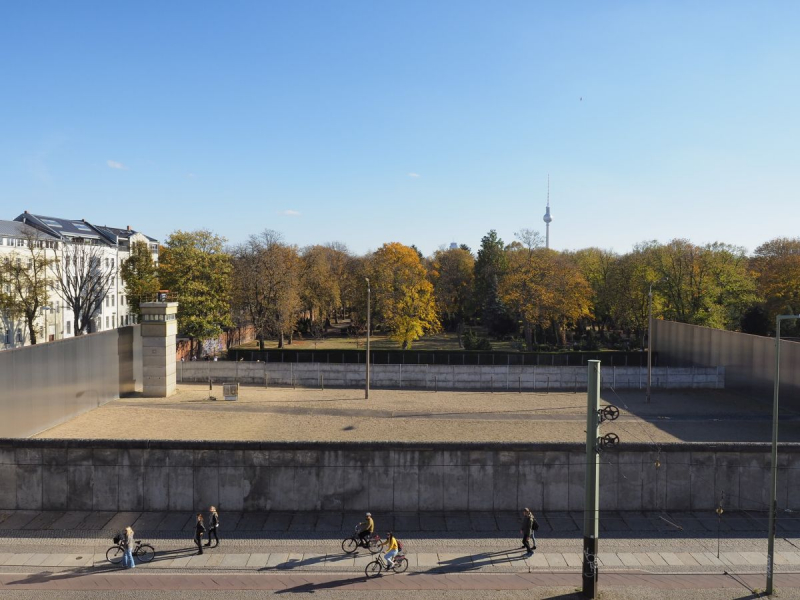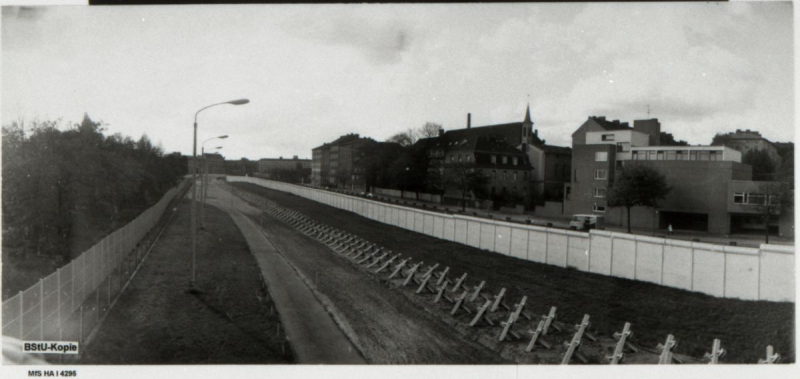The Monument

© Stiftung Berliner Mauer
You are standing in front of the national monument dedicated to the victims of communist tyranny and the division of the city. It was officially dedicated on August 13, 1998. The preserved relics of the original border fortifications on Bernauer Strasse have been integrated into the design and accentuated through artistic means. Two steel walls enclose a 70-meter-long section of the original border grounds. When the monument was designed with these elements in the 1990s, it was assumed that this preserved section of the Wall would serve as the entire memorial. The architects therefore chose to enclose the area on both sides. The aim was to convey a sense of the Wall’s infinity through the reflective steel while allowing the uniqueness of the preserved relics to stand out within their surroundings. If you approach the inner wall, you can look through the slits and see into the former death strip. These openings in the inner wall did not exist during the time of division. They were added later when the monument was built.
In the 1980s, the inner wall was the only barrier visible from the east side. It turned out that after the Wall was built on August 13, 1961, border guards and barbed wire were not enough to deter everyone from attempting an escape to the West. In fact, because the Wall disrupted so many relationships, some people became even more determined to risk the considerably more dangerous escape. The Socialist Unity Party of Germany (SED) responded by continually expanding the border. In the mid-1960s, it began replacing the provisional barriers with a centrally planned and uniformly designed border strip. Buildings that stood on the grounds were demolished to provide the border soldiers with an “unobstructed line of fire.”

The border strip on the grounds of the Sophienfriedhof cemetery, 1970 © BStU
In the 1980s, the border consisted of a multilayered system of barriers, as shown here in the monument. When someone climbed or touched the signal fence that stood a few meters away, an alarm was triggered in the nearest watchtower. At night, lights illuminated the border strip as bright as day. The tracks of an escape were visible in the raked security strip next to the patrol road. At the edge of the open strip of land stood the 3.6-meter-high border wall. The Wall underwent continual expansion until it came down in November 1989.
A section of the Berlin Wall with its multilayered system of barriers has been preserved on the grounds of today’s memorial. The monument conveys how the border fortifications looked at the end of the 1980s. It was designed by the architects Kohlhoff & Kohlhoff, who won the design competition conducted by the German government for a memorial on Bernauer Strasse in 1994.
Director Prof. Dr. Axel Klausmeier talks about the creation of the monument, 2023 © Stiftung Berliner Mauer